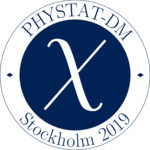I discuss findings from my recent comparison of Bayesian and frequentist approaches to discoveries ([1902.03243][1]). I introduce a counting experiment in which we are searching for a signal in the presence of a background, from which I generate pseudo-data. With that pseudo-data, I contrast the evolution of the $p$-value and posterior as we accumulate data and directly compare global...
In 2018 DAMA/LIBRA has reported results about 6 more annual cycles, the so-called Phase-II, which follows an upgrade of the detector with respect to Phase-I. A combined frequentist analysis of the results of DAMA Phase I and II is presented. The combined analysis is compared with each individual Phase result with the same assumptions. A discussion of nuisance parameters is reported.
LUX uses the hypothesis testing based on a profile likelihood ratio to determine the consistency of its data to a background only hypothesis, as well as to set confidence limits on the interaction strength of potential dark matter candidates.
In this talk I will present on improvements made to the code base used for conduction these tests. The model generation is now streamlined based on...
COSINE-100 is an experiment to detect dark matter induced recoil interactions in NaI(Tl) crystals in order to test the DAMA/LIBRA collaboration’s claim. The COSINE-100 detector has been operating since September of 2016 in the 700-m-deep Yangyang underground laboratory. First shape and annual modulation analyses have been completed, and the related statistical approaches will be presented. In...
I introduce a new formalism for incorporating uncertainties in the velocity distribution of dark matter in direct detection experiments ([1809.02323][1]). The method constructs a prior over upon possible velocity distributions. The prior penalizes departures from our expectation (e.g., a Maxwellian) according to the relative entropy. The uncertainty is subsequently marginalized using an exact...
The DEAP-3600 detector based 2km underground at SNOLAB (Sudbury, Canada) is a dark matter direct detection experiment. The detector consists of a single-phase liquid argon (LAr) target, of 3279 kg mass. Currently, there have been two WIMP dark matter searches performed by the DEAP-3600 collaboration; for both results, a cut-and-count approach was employed. In this talk, the development of a...
we present results on light weakly interacting massive particles (WIMPs) searches with annual modulation (AM) analysis on data from a 1-kg mass p-type point-contact germanium detector of the CDEX-1B experiment at the China Jinping Underground Laboratory. Data set with a total live-time of 3.2 years within a 4.2-year span are analyzed with physics threshold of 250 eVee. Annual modulation limits...
